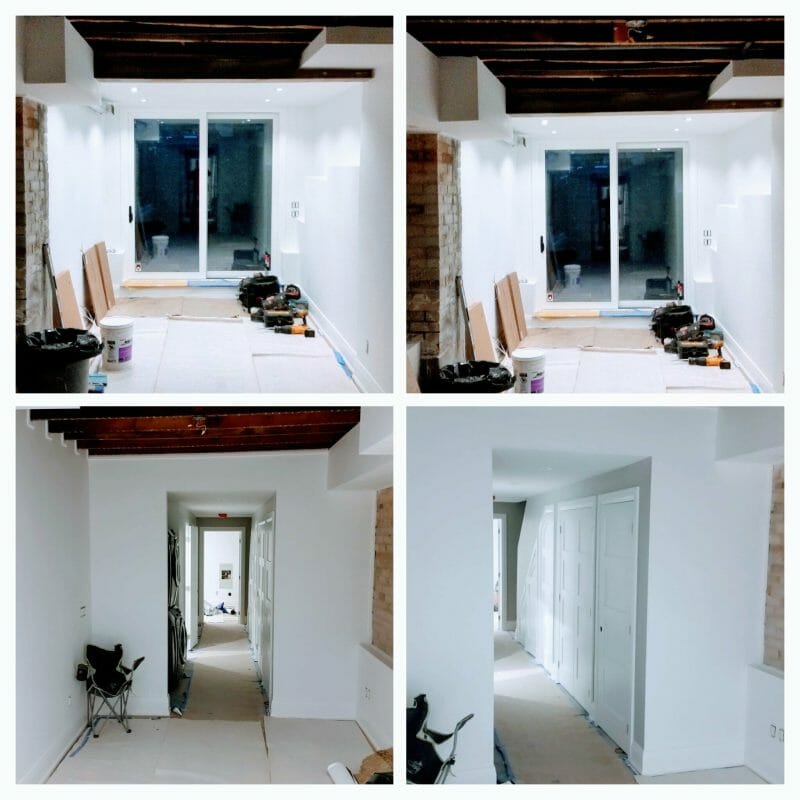
Compounding Variables: A Renovator’s View on Project Management
Compounding Variables: A Renovator’s View on Project Management
Renovating homes teaches a crucial lesson: project management teeters between meticulous planning and the reality of execution. Despite numerous efforts to develop processes that address renovation pitfalls, daily realities often dictate outcomes, varying unpredictably. Pre-planning offers the allure of control, yet as Mike Tyson famously said, “Everyone has a plan until they get punched in the face.” Life’s unpredictability often disrupts well-laid plans, forcing adaptation to the present rather than reliance on past-based variables. This post explores these dynamics through the concept of “compounding variables.”
Understanding Compounding Variables
Compounding variables are elements that seem manageable but are influenced by interconnected factors, drastically altering outcomes. Consider a logistics scenario where a lumber delivery is scheduled for 10 AM, but a driver’s absence leads to delays. A new dispatch employee fails to notify, leaving the crew waiting and wasting a workday. Similarly, homeowners buying fixtures on sale may later discover missing parts, delaying renovations and incurring additional costs.
Real-world examples illustrate these challenges:
Supply Chain Delays: A renovation faced material shortages, delaying completion. The project manager sourced alternatives that matched the design, kept progress on track, and ensured client satisfaction.
Structural Discoveries: Hidden structural damage was found mid-renovation. Instead of halting the project, the team adapted the plans to reinforce the structure, maintaining safety without major cost increases.
Unexpected Weather Conditions: Heavy rains delayed exterior work during a kitchen remodel. The project manager shifted focus to interior tasks, minimizing downtime and keeping the crew productive.
Client Design Changes: In a living room renovation, the homeowner requested a change in color scheme and flooring. The team quickly adapted, reordered materials and adjusted the schedule, avoiding significant delays.
Permit Issues: Unpermitted previous work in a bathroom remodel required additional permits. The project manager expedited the permitting process, revising timelines while ensuring compliance.
These scenarios highlight how unforeseen factors, like supply chain issues or client decisions, can disrupt even the best-laid plans. Solutions seem obvious only in hindsight, but compound variables are unpredictable and constant. Planning can address specific events, but no event is specific until it occurs. The key lies in recognizing that these variables are ever-present, necessitating a mindset that embraces adaptability.
The Shortcomings of Rigid Planning
Rigid planning assumes future events can be predicted and controlled based on past data, but it often fails amidst real-world complexity. Traditional planning’s focus on minimizing risk and adhering to a predefined path can hinder adaptation to new challenges. In renovations, success hinges on the ability to adjust plans daily. Rigid planning leads to more rigidity, missing the inherent variability of any action. While plans and processes are necessary, relying solely on them to solve daily problems leads to shortcomings.
The Power of Adaptability
Many project management systems embrace variability as key to success. The agile framework emphasizes flexibility and rapid responsiveness, recognizing that adaptability is essential in an ever-changing world. This philosophy encourages organizations to embrace change, learn from failures, and recalibrate strategies based on current data. The success of agile methodologies across sectors underscores their effectiveness in managing complex environments.
Case Studies of Adaptability in Action
Real-world examples further illustrate adaptability’s value. Companies that shift from rigid to flexible planning often report better outcomes and a more engaged workforce. In emergencies like natural disasters, adaptive strategies are crucial, allowing quick, decisive actions in changing conditions.
In renovations, adaptability might involve re-evaluating material choices due to supply disruptions or revising timelines when structural issues arise. These decisions, made on the fly, save time and resources, leading to successful project outcomes.
Conclusion
Effective planning today relies not on crafting perfect plans but on developing resilience and flexibility to respond to new challenges. Understanding and managing compounding variables with an adaptive mindset enables navigation through uncertainties with greater assurance. It’s not about avoiding life’s punches but learning to adapt and move forward.



